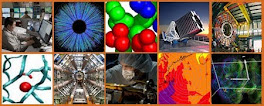The idea was to crash a spacecraft into the Moon at a chosen spot where ice might be lurking. Hitting the Moon at twice the speed of a bullet would send a plume of debris miles high that could then be analysed spectroscopically for water.
But there appears to have been no plume - only a brief white flash. Why not? Here's this blogger's explanation for what it's worth, published first on New Scientist and now the Times.
From the latter:
"Maybe a plume was formed but settled too quickly to be seen by the following probe, 4 minutes behind. Don't forget that although gravity is lower on the Moon, making things slower to fall, there's no air to slow the descent - even of dust particles or those hoped-for ice crystals.
There's a classic lab experiment in which a stout glass tube has all the air pumped out. A feather inside then falls as quickly as a ball-bearing.
Let's hope the NASA scientists did not forget their school physics."
Update: Sunday 18 October Well, halleluja, a plume was captured on camera after all, although the photograph in New Scientist ("Elusive lunar plume caught on camera after all") was somewhat disappointing. I mean to say - given it was said to be 6-8 kilometres wide, why show us a mere smidgeon of white on a so-called "zoomed image"? Small wonder the conspiracy theorists began falling out of the woodwork!
The fact that a plume was briefly formed lends support to the hypothesis I've ventured above. The plume didn't last long, because the particles fell back faster than many might suppose (given that the Moon's lower gravity seems to dominate most thinking, with the absence of an atmosphere frequently overlooked).
The absence of an atmosphere alters the dynamics of an impact and its aftermath considerably. Dust and other particles (ice?) may well be ejected much higher and further than on Earth, due to absence of a cushioning atmosphere - no air molecules to be pushed aside- but their return to "earth" would look entirely different to an observer or camera. Initially the descent would seem gentle - due to 1/6th Earth's gravity- but acceleration would be continuous, without anything comparable to "terminal velocity" (approx 120 mph on Earth in "old money"). A quick back- of- envelope calculation using school physics says that while it would take some 30 seconds for dust or ice particles to reach 120mph (which is our earthly terminal velocity), they would go on accelerating indefinitely until they finally hit the surface. There's another factor to consider - which another scribe on NS comments has pointed out : much of the ice -if present- would be vaporised by the kinetic energy (heat) of impact. The molecules would be unlikely to re-coalesce in the Moon's near-vacuum, and simply disappear from view - except perhaps to a highly sensitive spectrometer that was set up specifically to look for them - and certainly fail to drop back. Molecules generally don't "drop back" in a vacuum, especially in a weak gravitational field. They would simply spread out, ie diffuse rapidly.
Saturday, October 10, 2009
Subscribe to:
Post Comments (Atom)



















No comments:
Post a Comment